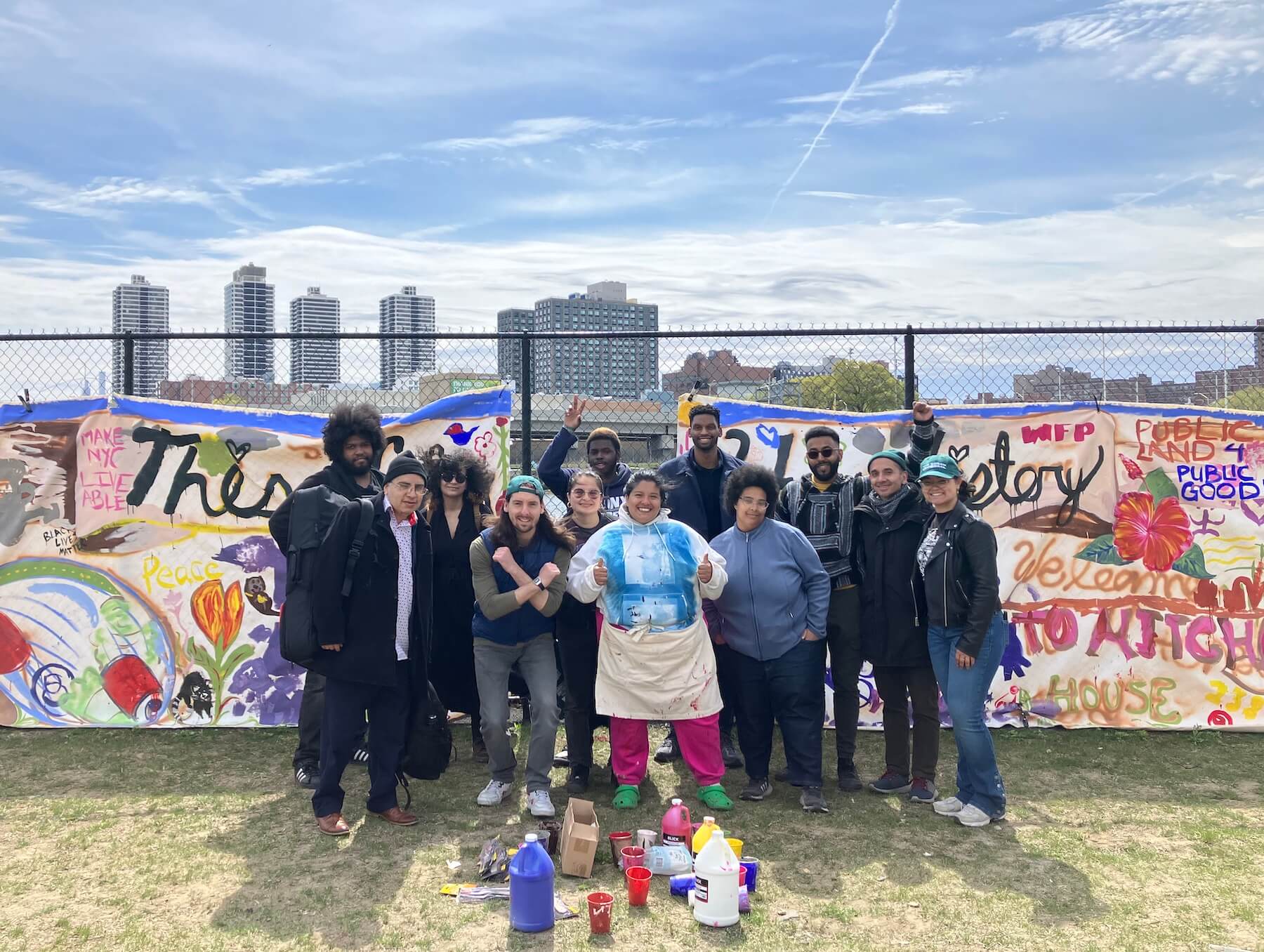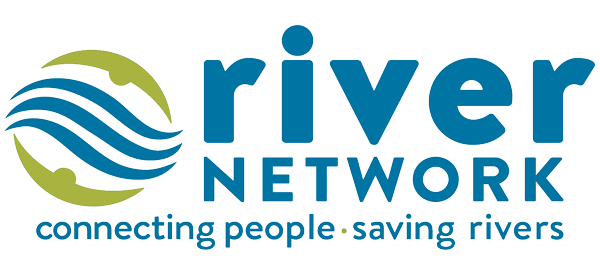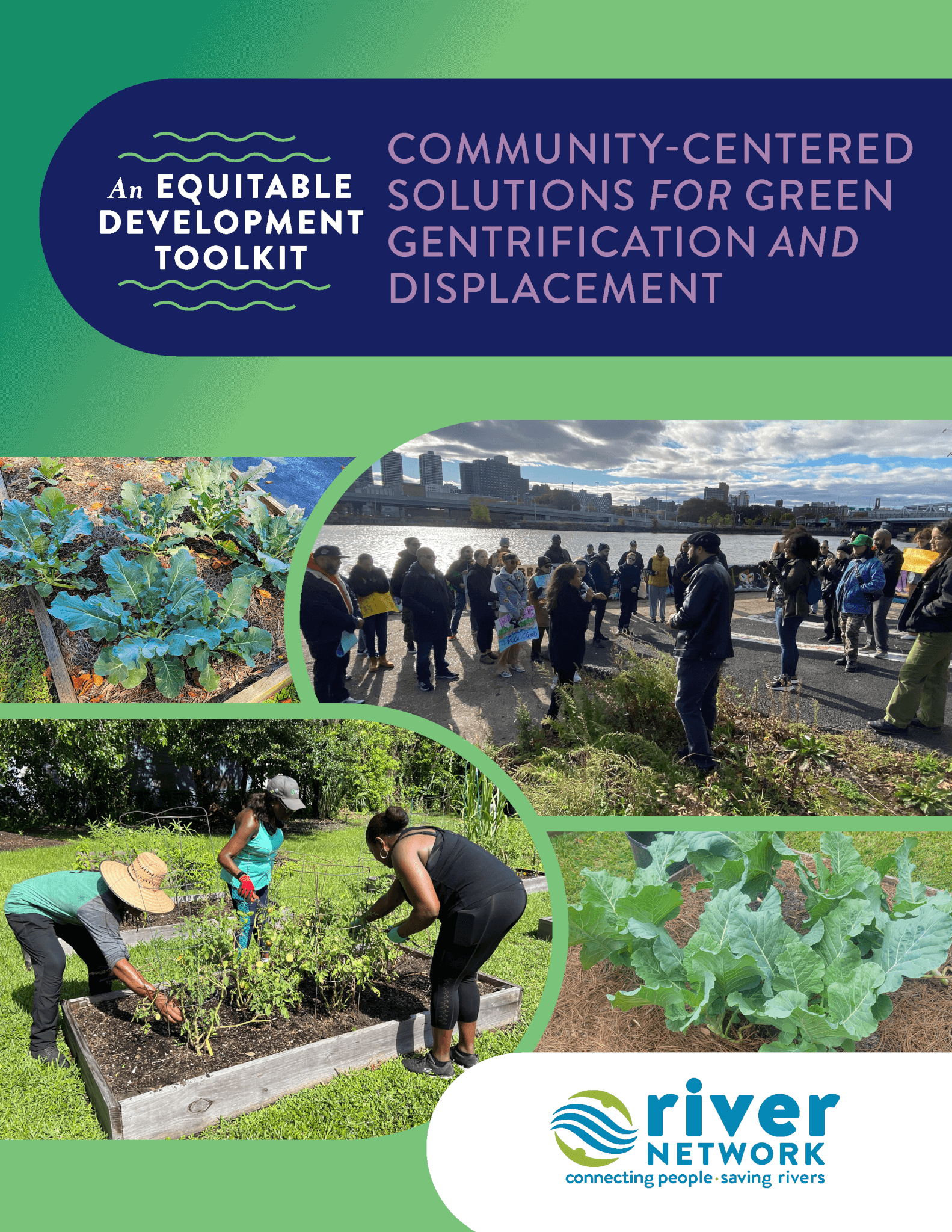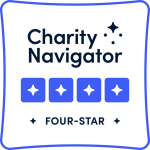Equitable Development Toolkit
Why Equitable Development?
Across the country, neighborhoods that are majority Black, Indigenous, people of color, and low income, are disproportionately facing the worst and most extreme climate and other related impacts. Because of a history of discriminatory policies and practices—including intentional underinvestment of critical services and infrastructure—there is a need for green improvements in these communities to help address climate and public health risks.
We have an opportunity to avoid the mistakes of the past, and to create equitable development practices that give communities opportunities to lead, to share their community priorities, and to create policies that allow them to stay in place.
We are excited to announce the release of the new toolkit, Community-Centered Solutions for Green Gentrification and Displacement. The toolkit provides important definitions, case studies, and numerous strategies groups can apply in their greening projects.
A principios de 2025 se publicará una edición en español.
Who Is This Toolkit For?
We developed this toolkit to inform individuals, organizations, and communities on the importance of equitable development in greening projects, with further guidance on how to incorporate and implement equitable development strategies to reduce the risk of gentrification and displacement. The target audiences are nonprofit organizations, community-based groups, and other entities who want to integrate anti-displacement strategies into their greening efforts and develop partnerships in support of their equitable development goals.

Explore the Toolkit
Below, find each section of the toolkit, for easy navigation to start where you are.
Ground yourself in historical background, definitions, and case study introductions.
Preparing organizations to do this work.
Engaging and planning for equitable development.
Reflections and a summary of recommended processes and practices.
Blank copies of rubrics and example templates that have been referenced throughout the toolkit.
Examples policies and plans, and other resources for anti-displacement and equitable development, funding, and learning more.
Photo credits: top row, left to right: Gloria McNair, Groundwork New Orleans, Gloria McNair, Shutterstock; bottom row left to right: Gloria McNair, Shutterstock.
Acknowledgments
For the authors, developing this toolkit was a labor of love and listening. We want to recognize and thank all of the partners and individuals who made the development of this toolkit possible.
Thank you to our highly engaged, knowledgeable, and helpful advisory team. We could not have done this without you and your care for the well-being of communities across the country. Lubna Ahmed, Colorado Department of Public Health and Environment’s Office of Environmental Justice; Elizabeth Balladares, Passaic River Urban Waters Federal Partnership Ambassador; Dr. Irvin PeDro Cohen, LISC Jacksonville; Augie Gastelum, Patchwork Community Inclusion; Arthur Johnson, Lower Ninth Ward Center for Sustainable Engagement and Development; and Ryan Winkle, RAIL CDC
We are also grateful for our contributors, reviewers, editors, and supporters, including: Maria Brodine, Director of Network Support and Learning, Groundwork USA; Teresa Davis, Philanthropy Director, River Network; Stephanie Heidbreder, Urban & Community Forestry Director, River Network; Addison Vlastnik, University of North Carolina EcoStudio Intern.
To those who participated in the listening sessions that occurred in October and November, 2023, thank you for sharing your insights and visions for what this toolkit could be.





